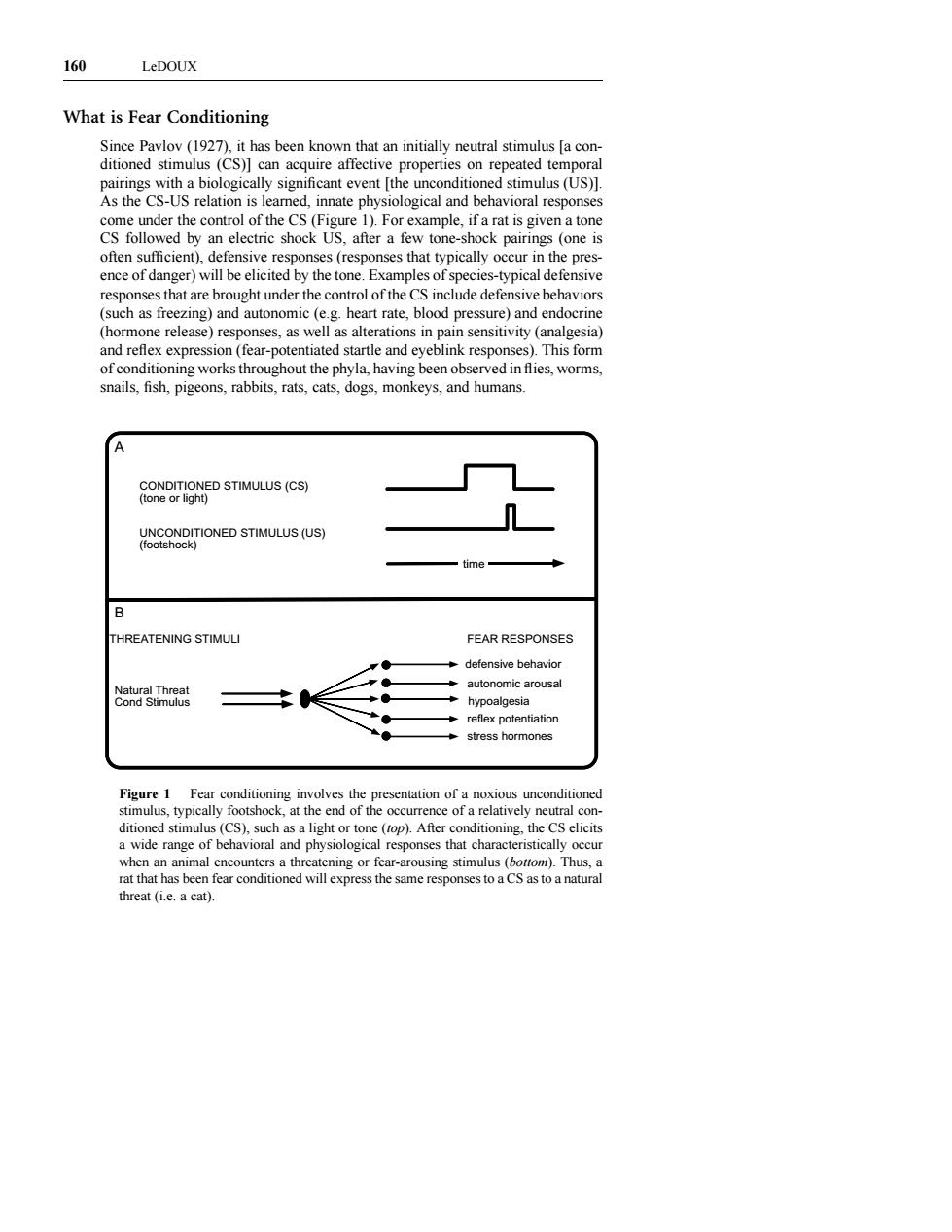正在加载图片...

160 LeDOUX What is Fear Conditioning Since Pavlov (1927),it has been known that an initially neutral stimulus [a con- ant event nd heha e under the control of the CS(Figure 1).For example,if a rat is given a tone ollowed by an electric shock US.after a few tone-shock pairings (one is e pres es that are brought under the contro of the CS include defensive behaviors (such as freezing)and autonomic (e.g.heart rate,blood pressure)and endocrine (hormone release)responses,as well as alterations in pain sensitivity (analgesia) ghout the ng be ed in flies. snails,fish,pigeons,rabbits,rats,cats,dogs,monkeys,and humans. STMULUS ICS) NTIONED STIMULUS (US) HREATENING STIMULI FEAR RESPONSES 三 a wide range of behavioral and physiological responses that characteristically occu threat (i.e.a cat).160 LeDOUX defensive behavior autonomic arousal hypoalgesia reflex potentiation stress hormones CONDITIONED STIMULUS (CS) (tone or light) UNCONDITIONED STIMULUS (US) (footshock) time Natural Threat Cond Stimulus THREATENING STIMULI FEAR RESPONSES A B Figure 1 Fear conditioning involves the presentation of a noxious unconditioned stimulus, typically footshock, at the end of the occurrence of a relatively neutral conditioned stimulus (CS), such as a light or tone (top). After conditioning, the CS elicits a wide range of behavioral and physiological responses that characteristically occur when an animal encounters a threatening or fear-arousing stimulus (bottom). Thus, a rat that has been fear conditioned will express the same responses to a CS as to a natural threat (i.e. a cat). What is Fear Conditioning Since Pavlov (1927), it has been known that an initially neutral stimulus [a conditioned stimulus (CS)] can acquire affective properties on repeated temporal pairings with a biologically significant event [the unconditioned stimulus (US)]. As the CS-US relation is learned, innate physiological and behavioral responses come under the control of the CS (Figure 1). For example, if a rat is given a tone CS followed by an electric shock US, after a few tone-shock pairings (one is often sufficient), defensive responses (responses that typically occur in the presence of danger) will be elicited by the tone. Examples of species-typical defensive responses that are brought under the control of the CS include defensive behaviors (such as freezing) and autonomic (e.g. heart rate, blood pressure) and endocrine (hormone release) responses, as well as alterations in pain sensitivity (analgesia) and reflex expression (fear-potentiated startle and eyeblink responses). This form of conditioning works throughout the phyla, having been observed in flies, worms, snails, fish, pigeons, rabbits, rats, cats, dogs, monkeys, and humans